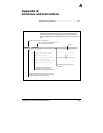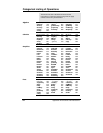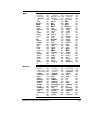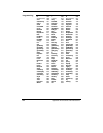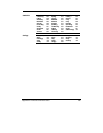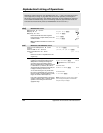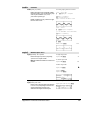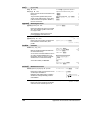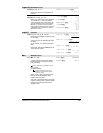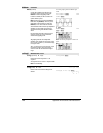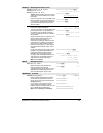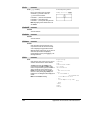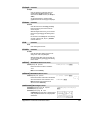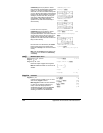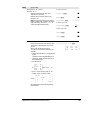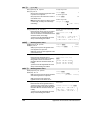
Appendix A: Functions and Instructions 789
augment() MATH/Matrix menu
augment(
list1,
list2
) ⇒
⇒⇒
⇒
list
Returns a new list that is
list2
appended to the
end of
list1
.
augment({1,ë3,2},{5,4}) ¸
{1 ë3 2 5 4}
augment(
matrix1
,
matrix2
) ⇒
⇒⇒
⇒
matrix
augment(
matrix1
;
matrix2
) ⇒
⇒⇒
⇒
matrix
Returns a new matrix that is
matrix2
appended to
matrix1
. When the “,” character is used, the
matrices must have equal row dimensions, and
matrix2
is appended to
matrix1
as new columns.
When the “;” character is used, the matrices
must have equal column dimensions, and
matrix2
is appended to
matrix1
as new rows. Does not
alter
matrix1
or
matrix2
.
[1,2;3,4]!M1 ¸ [
1 2
3 4
]
[5;6]!M2
¸ [
5
6
]
augment(M1,M2)
¸ [
1 2 5
3 4 6
]
[5,6]!M2 ¸ [
5 6
]
augment(M1;M2) ¸
1 2
3 4
5 6
avgRC() CATALOG
avgRC(
expression1
,
var
[,
h
]) ⇒
⇒⇒
⇒
expression
Returns the forward-difference quotient (average
rate of change).
expression1
can be a user-defined function name
(see
Func).
h
is the step value. If
h
is omitted, it defaults to
0.001.
Note that the similar function
nDeriv() uses the
central-difference quotient.
avgRC(f(x),x,h) ¸
f(x+h) - f(x)
h
avgRC(sin(x),x,h)|x=2
¸
sin(h+2) - sin(2)
h
avgRC(x^2ìx+2,x)
¸
2.ø(x - .4995)
avgRC(x^2ìx+2,x,.1)
¸
2.ø(x
- .45)
avgRC(x^2ìx+2,x,3)
¸ 2ø(x+1)
4
44
4Bin MATH/Base menu
integer1
4
44
4Bin ⇒
⇒⇒
⇒
integer
Converts
integer1
to a binary number. Binary or
hexadecimal numbers always have a 0b or 0h
prefix, respectively.
256 4Bin ¸ 0b100000000
0h1F
4Bin ¸ 0b11111
0b
binaryNumber
0h
hexadecimalNumber
Without a prefix,
integer1
is treated as decimal
(base 10). The result is displayed in binary,
regardless of the
Base mode.
If you enter a decimal integer that is too large for
a signed, 32-bit binary form, a symmetric modulo
operation is used to bring the value into the
appropriate range.
A binary number can have up to
32 digits. A hexadecimal number
can have up to 8.
Zero, not the letter O, followed by b or h.



